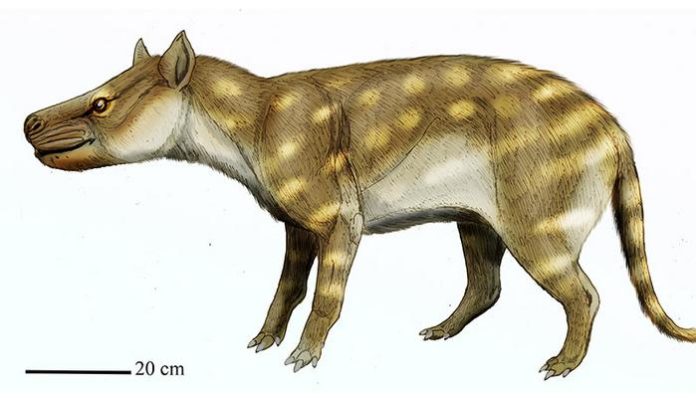
New research on the fossilised teeth of an ancient predator reveals how a 56-million-year-old mammal adapted its diet to survive extreme global warming, offering lessons on surviving climate change for wildlife today
The future of conservation and animal research
New research from Rutgers University has uncovered how an ancient, jackal-sized predator adapted its diet to survive a period of extreme global warming 56 million years ago. This discovery, based on the study of fossilised teeth from the extinct mammal Dissacus praenuntius, provides insights into how today’s wildlife might cope with modern climate change and what it means for the future of conservation.
Published in the journal Palaeogeography, Palaeoclimatology, Palaeoecology, the findings highlight the critical role of dietary flexibility in surviving environmental upheaval. According to Andrew Schwartz, a doctoral student who led the research, the ancient omnivore responded to the Paleocene–Eocene Thermal Maximum (PETM)—a period of rapid global warming—by shifting its diet from tough flesh to harder materials like bones. This adaptation not only ensured its survival but also offers a powerful lesson for contemporary conservation efforts.
Examining an ancient ecosystem: Surviving climate change
The researchers, using a technique called dental microwear texture analysis, examined the microscopic pits and scratches on the fossilised teeth of Dissacus praenuntius. These tiny marks reveal what the animal was chewing in the weeks leading up to its death.
The ancient predator, described by Schwartz as a “super weird mammal” with an oversized head and tiny hooves, was about the size of a jackal or coyote. Before the PETM, its dental wear patterns were similar to those of modern cheetahs, indicating a diet of primarily tough flesh. However, during and after this period of global warming, the teeth showed signs of crunching harder, more brittle foods like bone, similar to the wear seen on the teeth of modern lions and hyenas.
This dramatic dietary shift, the researchers concluded, was likely a response to food scarcity as its usual prey became smaller or less available due to the changing climate.
Being a “Generalist”
The study also shed light on the broader ecological consequences of rapid warming. The dietary shift was accompanied by a modest reduction in the predator’s body size, a change that earlier hypotheses had attributed solely to hotter temperatures.
However, this new research suggests that limited food availability played a more significant role. The findings underscore the importance of adaptability, or being a “generalist” in ecological terms. Schwartz explains that while specialising in a specific food source may be beneficial in the short term, it’s a risky strategy when the environment changes.
Generalists, like jackals or raccoons, which can eat a variety of foods, are equipped to survive climate change.
This insight is particularly relevant for modern conservation biology, as it can help scientists identify which species are most vulnerable to habitat loss and climate stress. Animals with narrow diets, such as pandas, face a greater risk of extinction, while more adaptable species may fare better.
Lessons from the past for the future
The PETM lasted about 200,000 years, but the changes it triggered were both fast and dramatic. Schwartz emphasises that by studying such ancient events, we can better understand and predict the consequences of today’s climate crisis. “One of the best ways to know what’s going to happen in the future is to look back at the past,” he said. The study’s conclusion that rapid warming can disrupt food webs and force animals to adapt or face extinction serves as a powerful warning for our own time.
Although Dissacus was a successful and adaptable species that thrived for 15 million years, it eventually went extinct, likely due to a combination of environmental changes and competition from other animals. This serves as a reminder that even the most resilient species have their limits.
By understanding the choices and challenges faced by ancient predators like Dissacus, researchers hope to provide valuable, actionable information for modern conservationists and policymakers working to protect our planet’s biodiversity in the face of an uncertain future.










